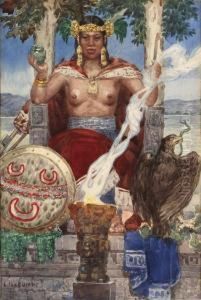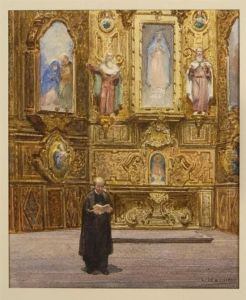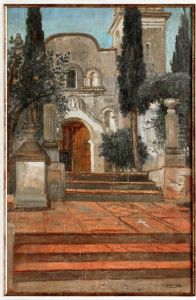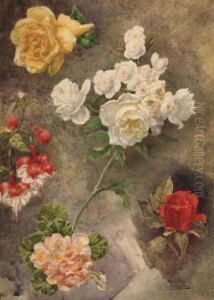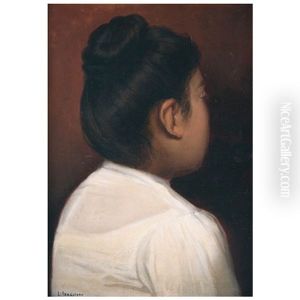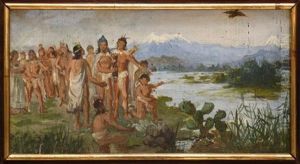Leandro Izaguirre Paintings
Leandro Izaguirre was a Mexican painter, born on January 13, 1867, in Mexico City. He is recognized for his contributions to the Mexican academic painting tradition of the late 19th and early 20th centuries. Izaguirre showed a strong inclination towards the arts from an early age, which led him to pursue studies at the renowned Academy of San Carlos in Mexico City, where he studied under notable painters such as Santiago Rebull and José Salomé Pina.
Izaguirre's work was profoundly influenced by the academic style of painting, which emphasized classical techniques, realism, and often drew upon historical and mythological themes. One of his most famed works is 'Torture of Cuauhtémoc,' a poignant depiction of the torture of the last Aztec emperor, Cuauhtémoc. This painting, created in 1893, garnered significant attention and praise for its emotive power and technical mastery, and it remains one of the iconic works of Mexican academic art.
Throughout his career, Izaguirre won several awards and recognitions for his art. He participated in various exhibitions, both within Mexico and internationally, including the World's Columbian Exposition in Chicago in 1893 and the Exposition Universelle in Paris in 1900, where his talents were further acknowledged.
Despite his success, Leandro Izaguirre's life was not without challenges. He lived through turbulent times in Mexico's history, including the Mexican Revolution, which brought about significant changes in the country's political, social, and cultural landscape. These changes also impacted the art world, as the rise of Mexican muralism in the 1920s, led by figures such as Diego Rivera, José Clemente Orozco, and David Alfaro Siqueiros, began to overshadow the academic style that Izaguirre represented.
Leandro Izaguirre's legacy, however, endures in the history of Mexican art. He is remembered as a dedicated artist who captured the spirit of his nation's history and identity through his meticulous and evocative paintings. Izaguirre's devotion to his craft continued until his death on October 25, 1941, in Mexico City. Today, his works are held in high esteem and can be found in various art collections and museums, serving as a testament to the enduring value of academic painting in Mexican art history.
